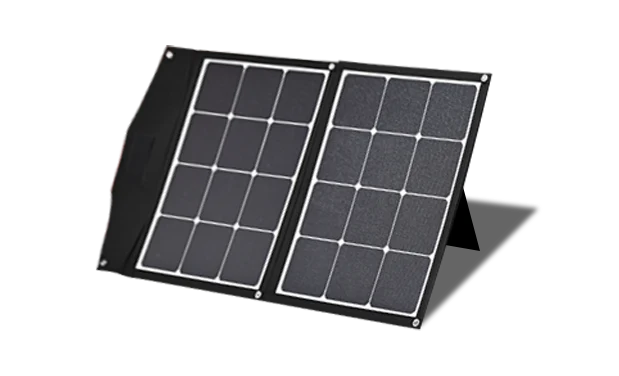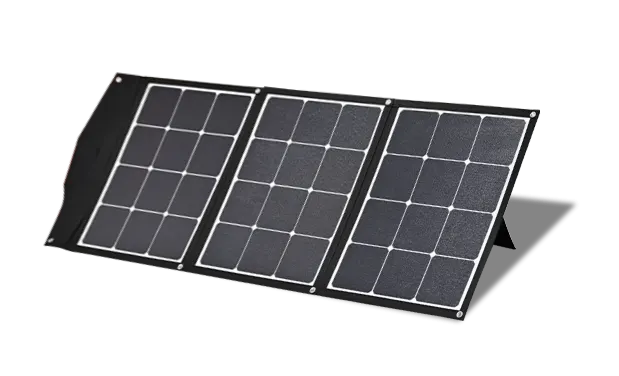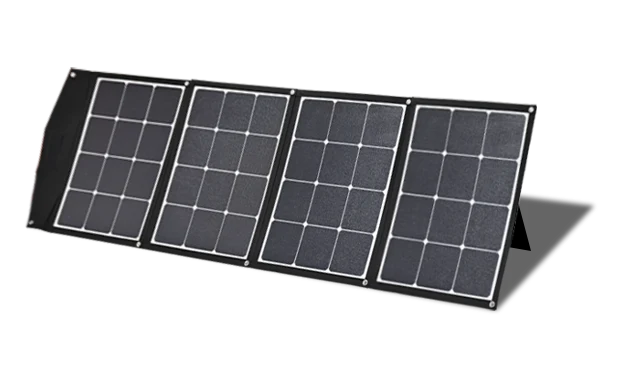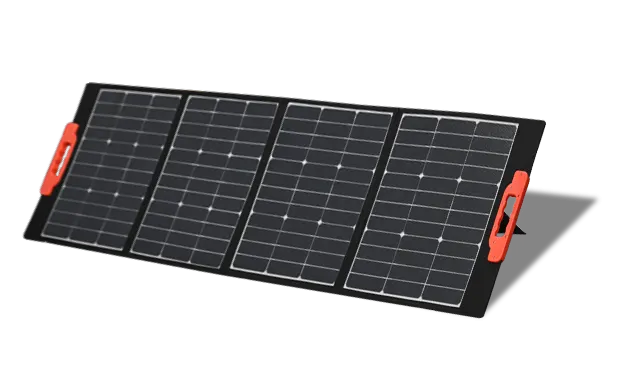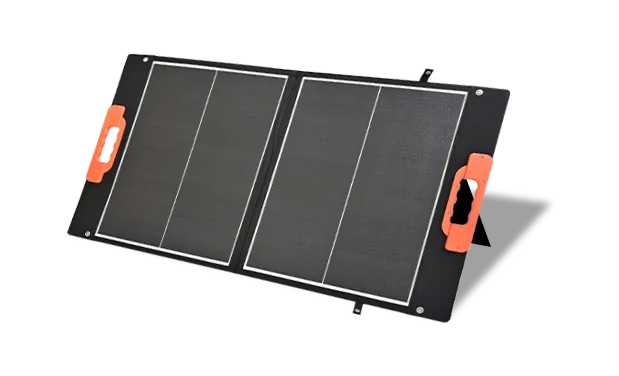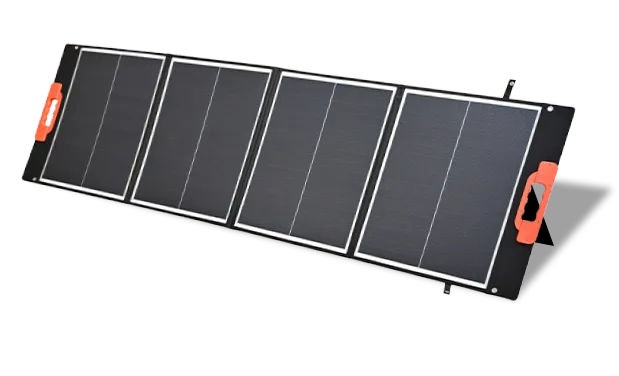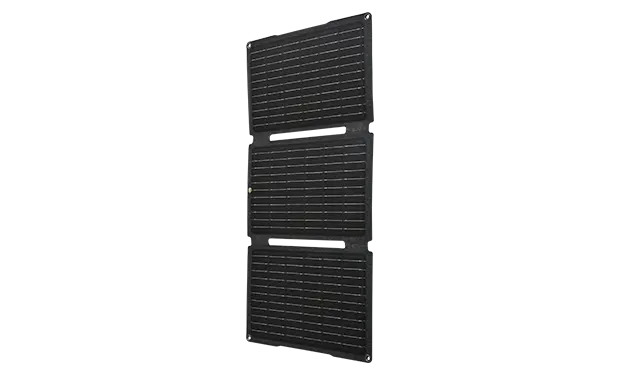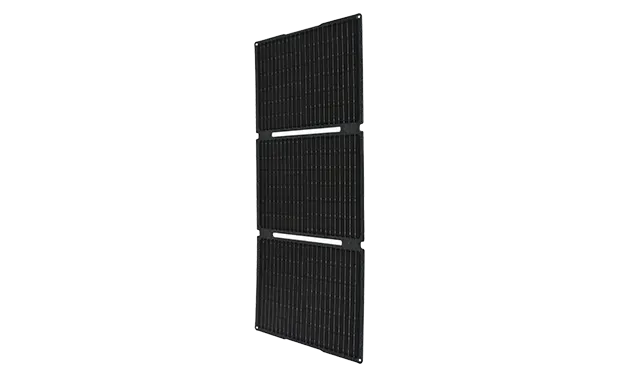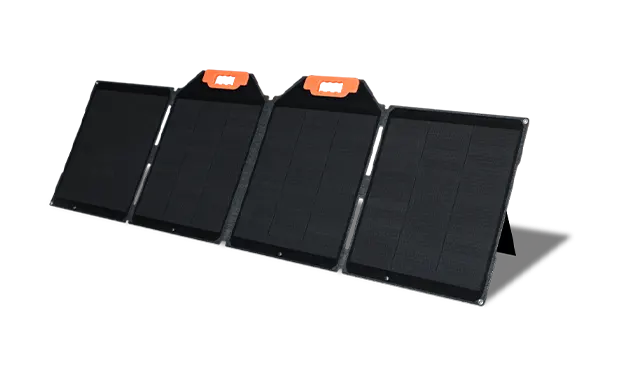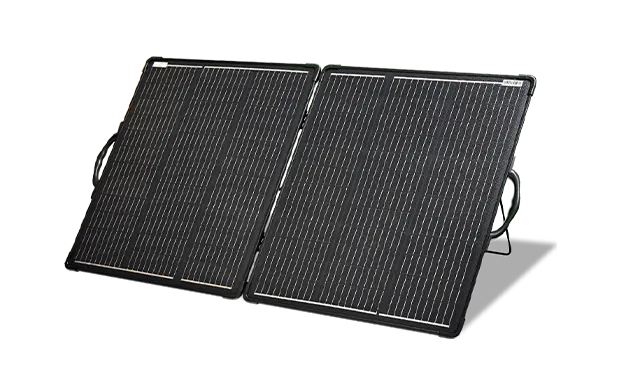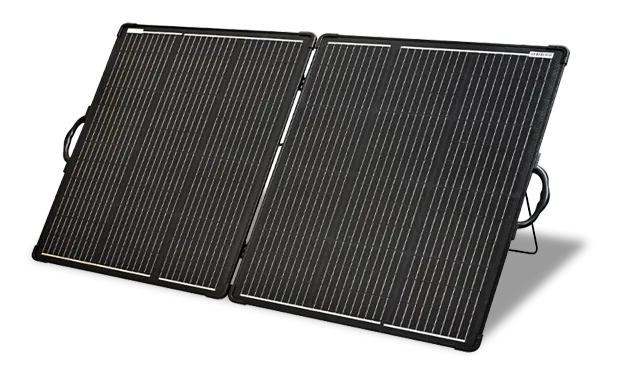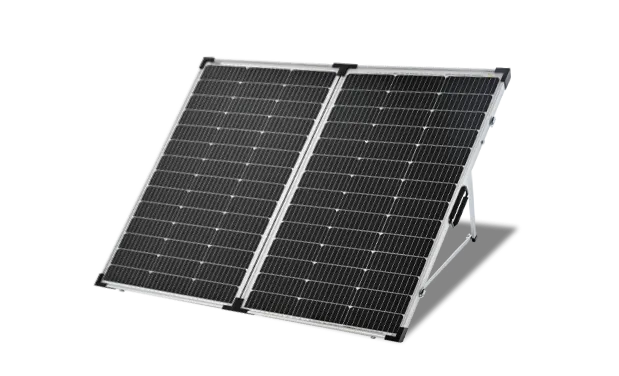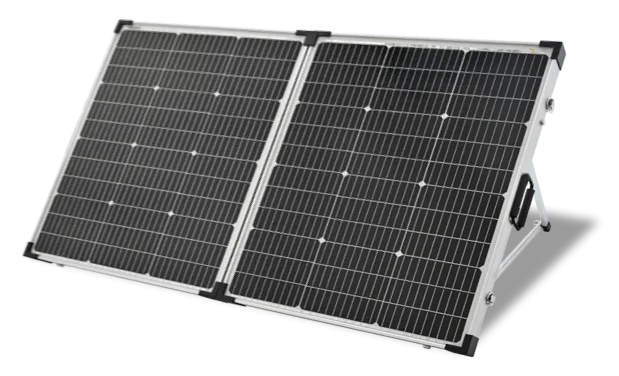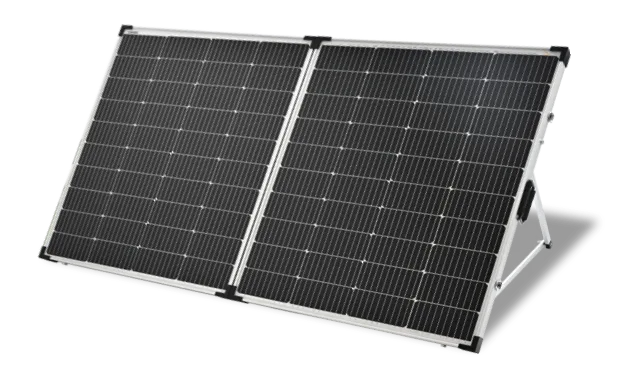Today, monocrystalline PERC and N-type IBC solar cells have efficiencies of 18% to 20% and above. This sets a new standard for high-efficiency residential solar panels in the future, as commercial solar panels begin to operate at peak operating efficiencies of over 20 to 22 percent.
What’s more, extensive research into photovoltaic (PV) solar energy efficiency is ongoing, with new technologies continuing to debut at high efficiency levels. Solar panels work by converting sunlight into energy to power our homes. Solar panel efficiency refers to how much sunlight reaches the panel and is converted into electricity and the efficiency rating measures how well the panel completes this process.
In this complete guide, we will talk about the most efficient solar panels from:
- Most Efficient Solar Panels (2024)
- Importance of Solar Panel Efficiency
- Most Efficient Solar Cells
- Cost of the Most Efficient Solar Panels
- Factors Influencing Solar Panel Efficiency
- Improving Solar Panel Efficiency
- Calculation of Solar Panel Efficiency
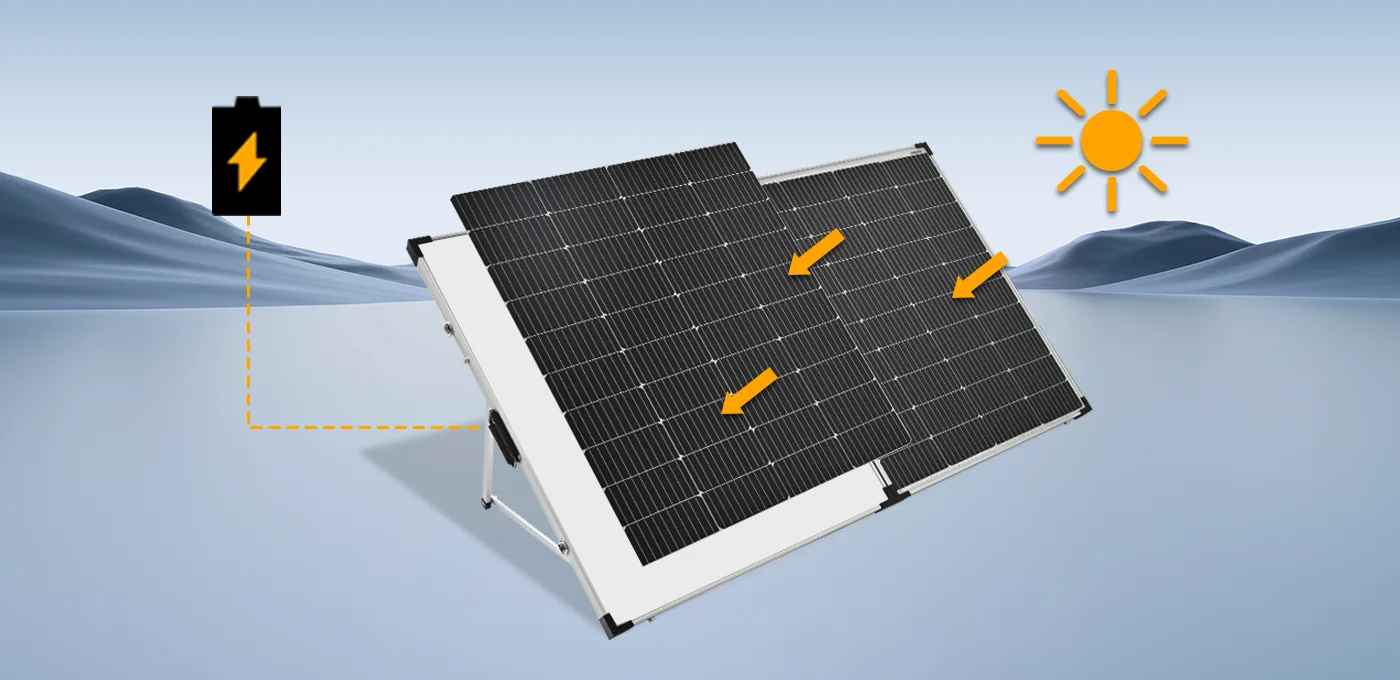
What Are the Most Efficient Solar Panels?
More efficient solar panels will generate more electricity than less efficient ones given the same amount of sunlight. One of those ways, efficiency rating, measures how much of the sun’s energy a panel’s solar cells turn into usable electricity.
The higher the percentage, the more efficient solar panels are. Not all sunlight is absorbed – most solar panels today operate at around 19-21% efficiency. Generally speaking, the higher the cost-efficiency rating of a solar panel, the more expensive it will be.
The Most Efficient Solar Panels at A Glance 2024
We have found that the most efficient solar panels are:
| Solar Panel Model | Efficiency |
|---|---|
| SunPower® A Series | Up to 22.8% |
| JinkoSolar Tiger Pro | Up to 21.3% |
| LG NeON® 2 Series | Up to 21.2% |
| Panasonic EverVolt | Up to 21.2% |
| Sungold TF Series | Up to 21.7% |
These ratings indicate how well the solar panels convert sunlight into usable energy. The higher the efficiency, the better the energy conversion and electricity production. Investing in high-quality solar panels with excellent efficiency rates helps maximize your potential energy savings.
Read on to learn more details about the best solar panels for your home, how solar panel efficiency can benefit you, and ways to improve your solar panel efficiency today.
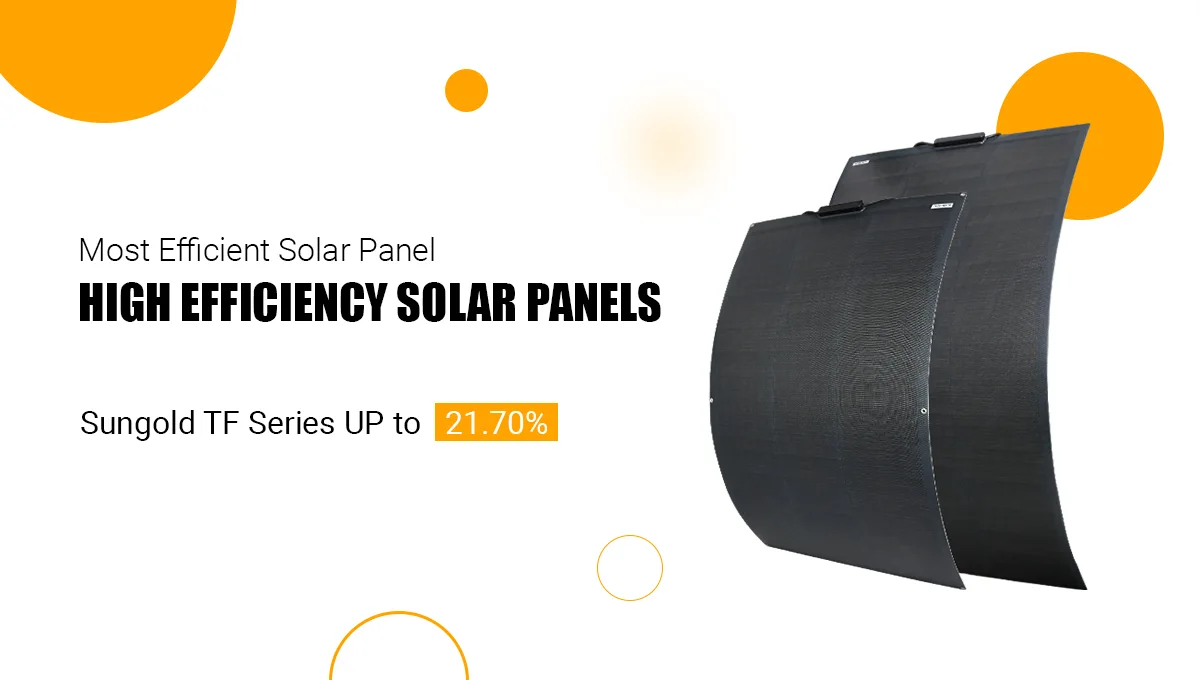
Why Is Solar Panel Efficiency Important?
High efficiency solar panels have several benefits:
Cost: High efficiency panels may cost more, but they can also help you save money because you can install fewer panels to meet your energy needs.
Energy production: Efficient solar panels are a better value because they produce more electricity than less efficient panels. Higher solar panel efficiency increases the amount of energy produced by the panels.
Net metering: Generating more electricity can increase your net metering returns. Net metering allows you to exchange excess energy from your solar panels for a credit on your electricity bill.
Battery Storage: The best solar cells can serve as temporary power sources during power outages. Having the most efficient solar panels can help you replenish your battery quickly after use.
Method: To help you sort through the vast amount of data, we’ve narrowed down the top five most efficient solar panels. To determine the most efficient solar panels, we looked at each top manufacturer’s performance in the following categories and compiled the information:
- Solar panel efficiency: the percentage of sunlight that a solar panel converts into usable electricity. The higher the efficiency, the more electricity the solar panel produces. The efficiency of a solar panel is affected by a variety of factors, such as material, temperature, angle, and shading.
- Material of the solar panel: the type of solar cell of the solar panel. Solar cells are the core component of solar panels and they convert light energy into electricity through the photovoltaic effect. Currently, there are three main types of solar cells on the market: monocrystalline silicon, polycrystalline silicon, and thin film. Of these, monocrystalline silicon solar cells are the most efficient, but also the most expensive. Polycrystalline solar cells are less efficient, but also less expensive. Thin-film solar cells are the least efficient but have the advantage of being flexible and lightweight.
- Solar panel wattage: The maximum power output under standard test conditions. The higher the wattage, the more electricity the solar panel produces. However, the wattage does not fully reflect the efficiency of the solar panel as different-sized solar panels may have the same wattage. Therefore, it is necessary to combine the size of the solar panel to calculate the power density of the solar panel, i.e., the number of watts per square meter. The higher the power density, the higher the efficiency of the solar panel.
- Dimensions: The larger the dimensions, the larger the area of the solar panel and the more sunlight it can receive. However, the size is also limited by the roof space and installation method. Therefore, you need to choose the right size of a solar panel according to your roof condition and energy needs.
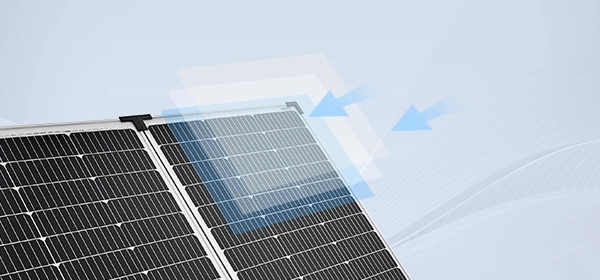
Most Efficient Solar Cells
The most efficient solar panels on the market generally use either N-type (IBC) monocrystalline silicon cells or other highly efficient N-type variations, including heterojunction (HJT) and TOPcon cells. Most manufacturers traditionally used the standard and lower-cost P-type mono-PERC cells; however, many large-volume manufacturers, are now rapidly shifting to more efficient N-type cells using HJT or TOPcon cell designs.
Efficiency of panels using different cell types
- Polycrystalline – 15 to 18%
- Monocrystalline – 16.5 to 19%
- Polycrystalline PERC – 17 to 19.5%
- Monocrystalline PERC – 17.5 to 20%
- Monocrystalline N-type – 19 to 20.5%
- Monocrystalline N-type TOPcon – 21 to 22.6%
- Monocrystalline N-type HJT – 21.2 to 22.8%
- Monocrystalline N-type IBC – 21.5 to 23.6%
Cost of the Most Efficient Solar Panels
The price of high efficiency solar panels will vary depending on the brand you purchase, where you live, who installs the solar panels, and other factors. However, there are several ways to reduce costs through solar panel incentives and rebates, such as:
Residential Clean Energy Credit: The Residential Clean Energy Credit is a federal tax credit that allows you to recoup 30% of the cost of solar installation through 2032. The credit will decrease to 26% in 2033 and then to 22% in the final year of 2034.
State Incentives: Our resources can help you discover state solar incentives and rebates to lower the overall cost of installing a solar panel system.
Learn more about return on investment: Calculating the return on investment of solar panels can help you choose high-efficiency solar panels that fit your budget.
What Makes Solar Panels Efficient?
There are other factors to consider when evaluating the efficiency of solar control panels. For example, wattage, panel size, construction, and materials also affect the total solar output of a panel. These factors affect the amount of solar energy created by the panels. However, they don’t always correlate in the way you expect. For example, simply having a high wattage doesn’t necessarily mean a panel is more efficient. Therefore, it is better to check all the specifications of the solar panels rather than focusing on just one aspect. Here are other features that help improve solar panel efficiency:
Wattage: The power of high efficiency solar panels is measured in watts. Watts are voltage multiplied by current.
Panel size: Larger panels generally produce more wattage, which increases efficiency.
Structure: The composition of a solar panel includes busbars that conduct electricity within the panel. The location and number of busbars affect efficiency.
Materials: Solar panels are made from various forms of silicon. They can be single-crystal, polycrystalline, or amorphous, with single-crystal being the most efficient.
Reflection: You want your solar panels to absorb sunlight, not reflect it. All solar panel brands have low reflectivity due to anti-reflective coatings.
How to Improve the Efficiency of Solar Panels?
Adding a quality solar cell to your home solar system is the easiest way to increase the efficiency of your solar panels. A solar cell conserves the energy produced by solar panels during peak hours of the day so that you can use it during off-peak hours. Here are some other ideas for improving solar panel efficiency in various weather conditions:
Make solar panels more efficient in cold weather
Cold weather does not necessarily harm solar panel efficiency if there is still sunlight. However, if your panels are covered in snow for multiple days in a row, it may cause a temporary decrease in efficiency. Mounting solar panels at a slightly steeper angle can help melt snowfall off faster.
Improve solar panel efficiency in hot weather
Contrary to what you might expect, extreme heat can reduce the efficiency of solar panels. While you can’t make a hot day cooler, you can choose panels with a lower temperature coefficient or the best solar panels for hot climates The temperature coefficient measures resistance as a function of temperature. You can find the panel’s temperature coefficient in the product specifications. That said, panels with a low-temperature coefficient also tend to have a reduced overall efficiency rating, so there’s a trade-off. If you live in an area with an unusually hot climate, talk to your solar installer about whether low-temperature coefficient panels are a good option for you.
Improves solar panel efficiency when it rains
The good news is that rain helps make solar panels more efficient in the long run because it washes away dirt and debris that prevents the panels from absorbing sunlight.
Maintain your high efficiency solar panels when it snows
When you install them on your rooftop, it’s essential to have some solar panel maintenance steps in the winter. Adjusting the angle of your solar panel mounting is beneficial in increasing the efficiency of your solar panels during the winter months as well as the amount of power they generate.
How Is Solar Panel Efficiency Calculated?
Cell efficiency is determined by the cell structure and the type of substrate used, which is usually P-type or N-type silicon. Cell efficiency is calculated by fill factor (FF), which is the maximum conversion efficiency of a photovoltaic cell at optimal operating voltage and current. When you’re shopping for high-efficiency solar panels, the efficiency rating will be listed on the panel’s datasheet.
But how exactly is it calculated? There’s a pretty easy formula for calculating solar panel efficiency:
Efficiency = [Power output of panel / (Area of panel x solar irradiance)] x 100
When solar panels are tested in the lab under Standard Test Conditions (STC), it’s assumed they will receive irradiance levels of 1,000 watts of sunlight per square meter. Knowing this, let’s calculate the efficiency rating for a:
350-watt panel with an area of 1.8 square meters:
Efficiency rating = [350 watts / (1.8 m2 x 1,000 watts per m2)] x 100
Efficiency rating = 19.4%
So, this 350-watt panel has an efficiency rating of 19.4%. Not bad!
The Bottom Line on Home the Most Efficient Solar Panels
Whether you finance, lease your solar panels, or use a solar power purchase agreement (PPA), the efficiency of the panels is a key factor in how much electricity your home solar system produces. Keep in mind that if you are looking to install solar panels for your RV, the specifications will be significantly different than residential solar panels.

Is It Worth Buying High Efficiency Solar Panels?
Yes. most efficient solar panels will have a higher energy output, making your solar panels a better value. Learn more about the incentives and rebates you can get for installing solar panels in your state.
California solar panels
California solar panels can be a great investment that can help you save thousands of dollars on energy bills. California residents typically pay about $17,350 for solar panels for a 5-kilowatt (kW) system. The average cost of a solar panel array increases if you invest in a larger system. Thankfully, California’s solar incentives, tax credits, and rebates can help lower installation costs.
California leads the U.S. in solar energy, producing nearly 30% of the nation’s solar energy. The Golden State will add enough solar capacity to power approximately 5.8 million homes over the next five years, according to the Solar Energy Industries Association (SEIA). Currently, more than 1.8 million solar panel systems are installed across the state.
Florida Solar Panels
Solar panels in Florida can help you save thousands of dollars in energy costs over a 25 to 30-year lifespan. The average cost of going solar in Florida is $28,933, which can be high for many residents of the state. However, the savings on electricity bills can offset the initial cost, resulting in significant savings in the long run. Depending on your consumption and system size, you may be able to recoup the installation costs in 6-10 years.
Florida is called the “Sunshine State” for a reason. Abundant sunlight and a warm climate make rooftop solar an excellent investment in Florida. Most homes in the state receive an average of 230 days of sunshine per year, allowing residents to generate most of their electricity at home. Florida’s hot and sunny climate increases air conditioning usage, which increases energy bills. As of May 2023, the average residential electricity bill in Florida is $166.81 per month, ranking among the 10 states with the highest electricity bills.
Texas Solar Panels
Texas is rich in solar energy resources, and the state is one of the national leaders in solar energy utilization. Solar Power Generation The second is solar power generation capacity. By 2023, the state will have more than 18,000 megawatts (MW) of installed solar capacity, enough to power more than 2.1 million homes. But how much do solar panels cost in Texas? According to Finding Energy, the average solar panel system with a power of 10 kilowatts costs about $33,300, which can save the average Texas household nearly $2,000 per year in energy bills.
Ohio solar panels
Installing solar panels is an expensive home improvement, with the average cost in Ohio being approximately $30,690. The average monthly residential electricity bill in Ohio as of June 2023 is $144.33 for energy in the state. That’s an increase of nearly 15% from 2022 and is likely to continue rising.
Yes. most efficient solar panels will have a higher energy output, making your solar panels a better value. Learn more about the incentives and rebates you can get for installing solar panels in your state.
Most Efficient Solar Panels FAQs
Are the most efficient solar panels more expensive?
Not always. Sungold tf series are average-priced solar panels with high-efficiency ratings.
What are the most efficient solar panels you can buy?
Currently, the most efficient solar panels on the market are the TF series flexible solar panels with a conversion efficiency of up to 23%, making them an excellent choice for outdoor activities. Featuring ETFE solar panel technology, these panels are both durable and efficient, making them a reliable source of renewable energy for your outdoor adventures.
How does the most efficient solar panels compare to fossil fuels?
Depending on how much energy the product generates, fossil fuels are most efficient solar panels currently on the market. Efficiencies for coal and natural gas hover between 30%–40%. That is, emissions are negative byproducts of fossil fuels that outweigh their efficiency advantages.
Are more efficient solar panels more expensive?
In general, yes. While specific pricing information for solar panels isn’t readily available, high-efficiency solar panels are typically more expensive.
What should I consider when choosing a solar panel company?
Because there’s no one-size-fits-all solar solution, there’s no one-size-fits-all advice for choosing a solar company. The best approach is to get quotes from multiple installers before deciding. Choose the company that has offered you the best fit for your needs, you trust to do the work and has answered all your questions.
You should understand your energy usage before going solar and decide whether your goals are to completely replace that energy, save as much money as possible or achieve something else. From there, it’s a matter of measuring competing quotes against your goals.
Who produces the most efficient panels?
At the moment, the most efficient solar panels available on the residential market are made by SunPower and Canadian Solar. Sungold solar companies are catching up, however, and technology continues to improve.
What is the maximum the most efficient panels?
In the residential market, the most efficient solar panels currently available are 22.8% efficient. In general, more efficient panels are possible. The National Renewable Energy Laboratory developed a solar cell with an efficiency of 39.5%, but don’t expect to put it on your roof.
Why are solar panels not efficient?
Commercial and government entities such as NASA could use more efficient solar panels. However, the materials needed to increase the efficiency of residential solar panels will make them more expensive.
How do you benefit from using the most efficient solar panels?
The more efficient the solar panel, the more energy your system will produce to power your home. Improved production means you’ll need fewer panels to meet your energy needs. Efficient panels also provide better energy savings and return on investment.
What are the most efficient solar panels made of?
The most efficient solar panels are made of silicon, one of the most abundant elements on earth. Crystalline silicon panels offer the best efficiency ratings and energy production. Monocrystalline panels use a single silicon crystal, while polycrystalline panels use multiple crystals.
What type of solar panels are most efficient?
Most of the solar panels installed today are made of either monocrystalline or polycrystalline cells. Monocrystalline solar panels are more efficient than their polycrystalline counterparts, although they’re a bit more expensive. All the solar panels listed above use monocrystalline cells.
A third type of solar panel, thin-film solar panels, are less efficient than mono- and polycrystalline panels.
What affects the efficiency of solar panels?
In the real world, many factors can cause you to get less energy than your most efficient solar panels rating suggests.
Solar panel angle: You can’t just point your solar panels up and expect them to work their best. There is an optimal angle and position for panels, which depends largely on where you live.
Sunlight: If the sky is foggy or cloudy, less sunlight will reach the panels and less electricity will be produced than expected.
Temperature: Another factor that affects the efficiency of solar panels is temperature. As solar panels heat up, the energy they produce begins to decrease, albeit at different rates. A solar panel’s temperature coefficient measures how much its output decreases for every one degree Celsius (22.2 celsius to fahrenheit) increase in its temperature.
Other electrical components: Power does not flow directly from the panel to the toaster. Some can be lost in transit through inverters and other electrical equipment.





